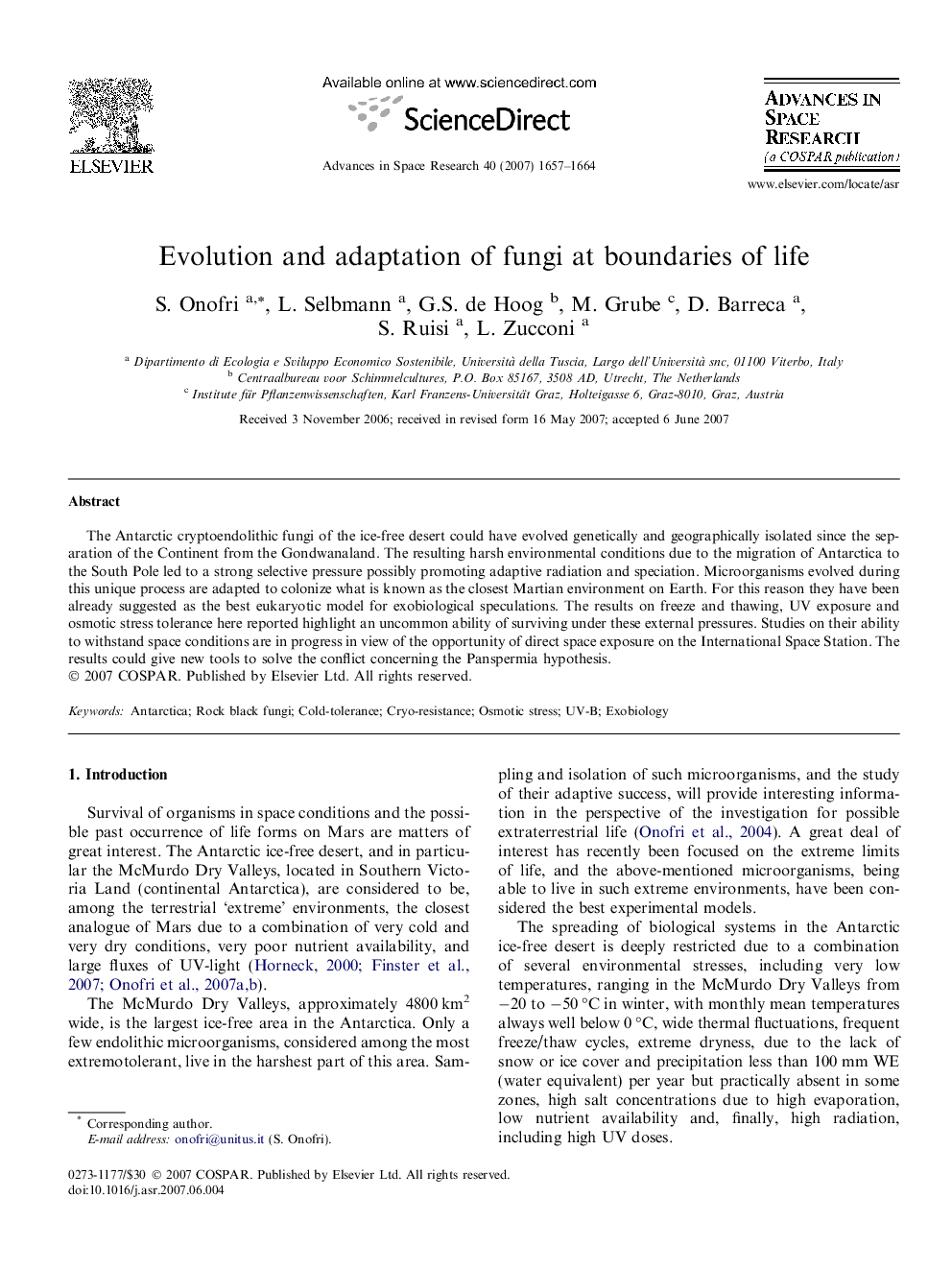| Article ID | Journal | Published Year | Pages | File Type |
|---|---|---|---|---|
| 1767816 | Advances in Space Research | 2007 | 8 Pages |
Abstract
The Antarctic cryptoendolithic fungi of the ice-free desert could have evolved genetically and geographically isolated since the separation of the Continent from the Gondwanaland. The resulting harsh environmental conditions due to the migration of Antarctica to the South Pole led to a strong selective pressure possibly promoting adaptive radiation and speciation. Microorganisms evolved during this unique process are adapted to colonize what is known as the closest Martian environment on Earth. For this reason they have been already suggested as the best eukaryotic model for exobiological speculations. The results on freeze and thawing, UV exposure and osmotic stress tolerance here reported highlight an uncommon ability of surviving under these external pressures. Studies on their ability to withstand space conditions are in progress in view of the opportunity of direct space exposure on the International Space Station. The results could give new tools to solve the conflict concerning the Panspermia hypothesis.
Related Topics
Physical Sciences and Engineering
Earth and Planetary Sciences
Space and Planetary Science
Authors
S. Onofri, L. Selbmann, G.S. de Hoog, M. Grube, D. Barreca, S. Ruisi, L. Zucconi,
